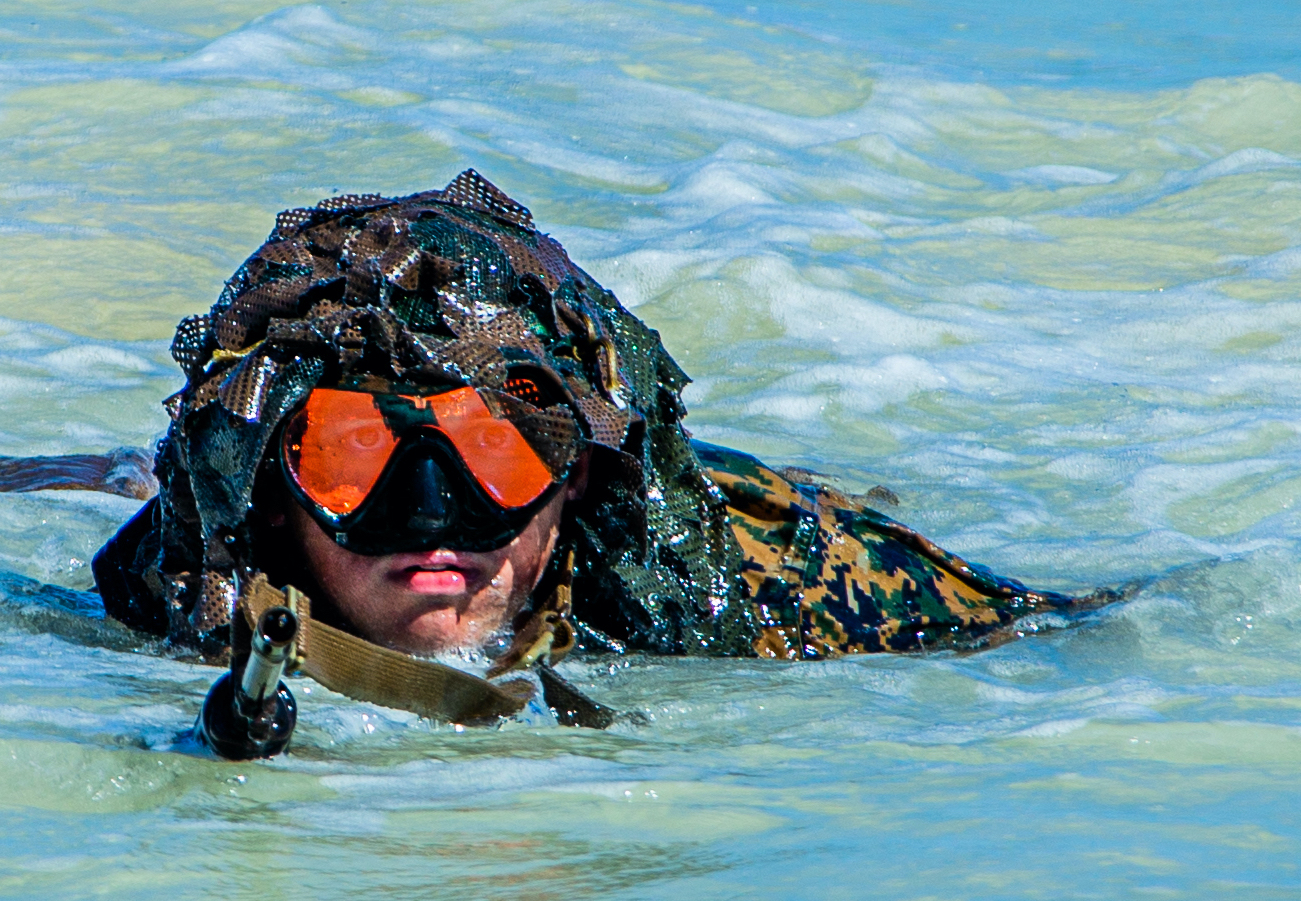
The Marine Corps is a year into reshaping its force to become optimized for modern operations – in combat and in everyday competition – by 2030, and the service has already taken some major steps such as getting rid of all its tanks and refining its vision for how to buy the next reconnaissance vehicle
After the March 2020 release of Force Design 2030, Commandant of the Marine Corps Gen. David Berger today released an annual update to the document that lays out the progress already made and the steps still to come, as the service continues to learn more about what it will need to deter evolving threats in the Pacific and around the globe.
“Since Force Design 2030 was announced in March 2020, considerable progress has been made as we enter into year two of this 10-year modernization initiative. The Marine Corps activated, deactivated, and realigned many units across the Marine Air-Ground Task Force, begun the divestment of legacy systems and functions, to include the complete divestment of tanks, and modified our force structure in ways that support operations as a Stand-In Force focused on our primary pacing threat, but remain globally responsive,” the Marine Corps stated in a news release on the Force Design update.
After a year of modeling and simulation, wargaming and exercises in the field, the Marine Corps is still focused on four main areas: logistics and sustainment; long-range precision fires; alternate positioning, navigation, and timing (PNT); and command, control, communications, computers, cyber, intelligence, surveillance, reconnaissance and targeting (C5ISRT).
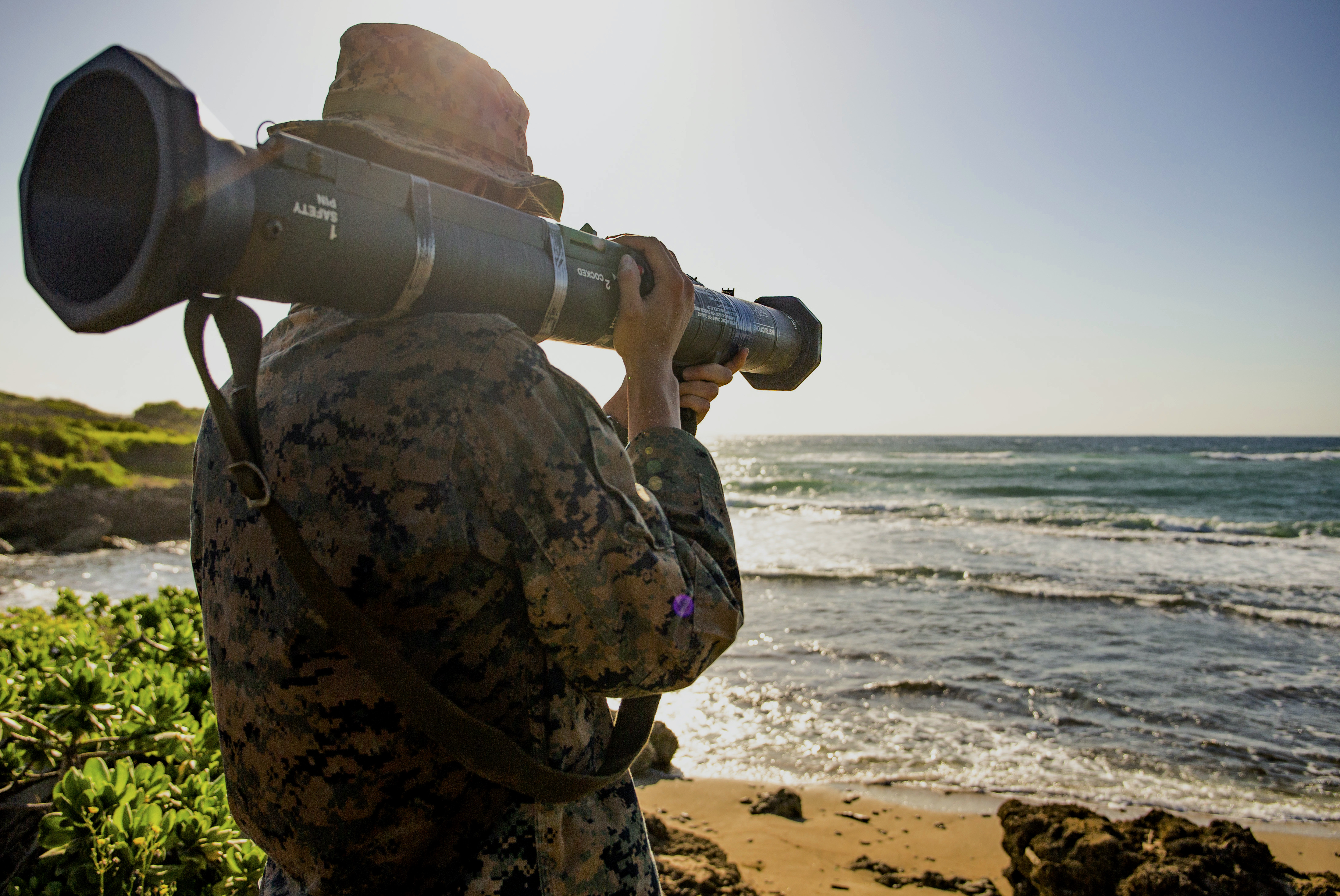
C5ISRT – and specifically reconnaissance and counter-reconnaissance – are mentioned repeatedly throughout the Force Design annual update, and Deputy Commandant for Combat Development and Integration Lt. Gen. Eric Smith told USNI News that that’s for good reason.
“We’re uniquely positioned as the inside force, as the stand-in force – as you’ve heard me say, we have 20,000 Marines west of the [International] Date Line, we live there … so we are uniquely positioned to sense and make sense of what is happening around us, to report what we see, to close kill chains,” he said during a media teleconference on the updated Force Design plans.
“So the focus on reconnaissance and counter-reconnaissance, we are just so uniquely positioned to do it that the commandant has said: look, of the things we do – putting Ka-Bars into people, launching missiles – we also must sense, make sense and close kill chains, participate in the kill web.”
Force Design 2030 efforts – with a special emphasis on the idea that the Marines will operating as small groups distributed throughout the vast Pacific and will need to rely on their own organic capabilities to “sense, make sense and close kill chains” across long distances – are shaping concept development, acquisition efforts and personnel models.
Acquisition Needs
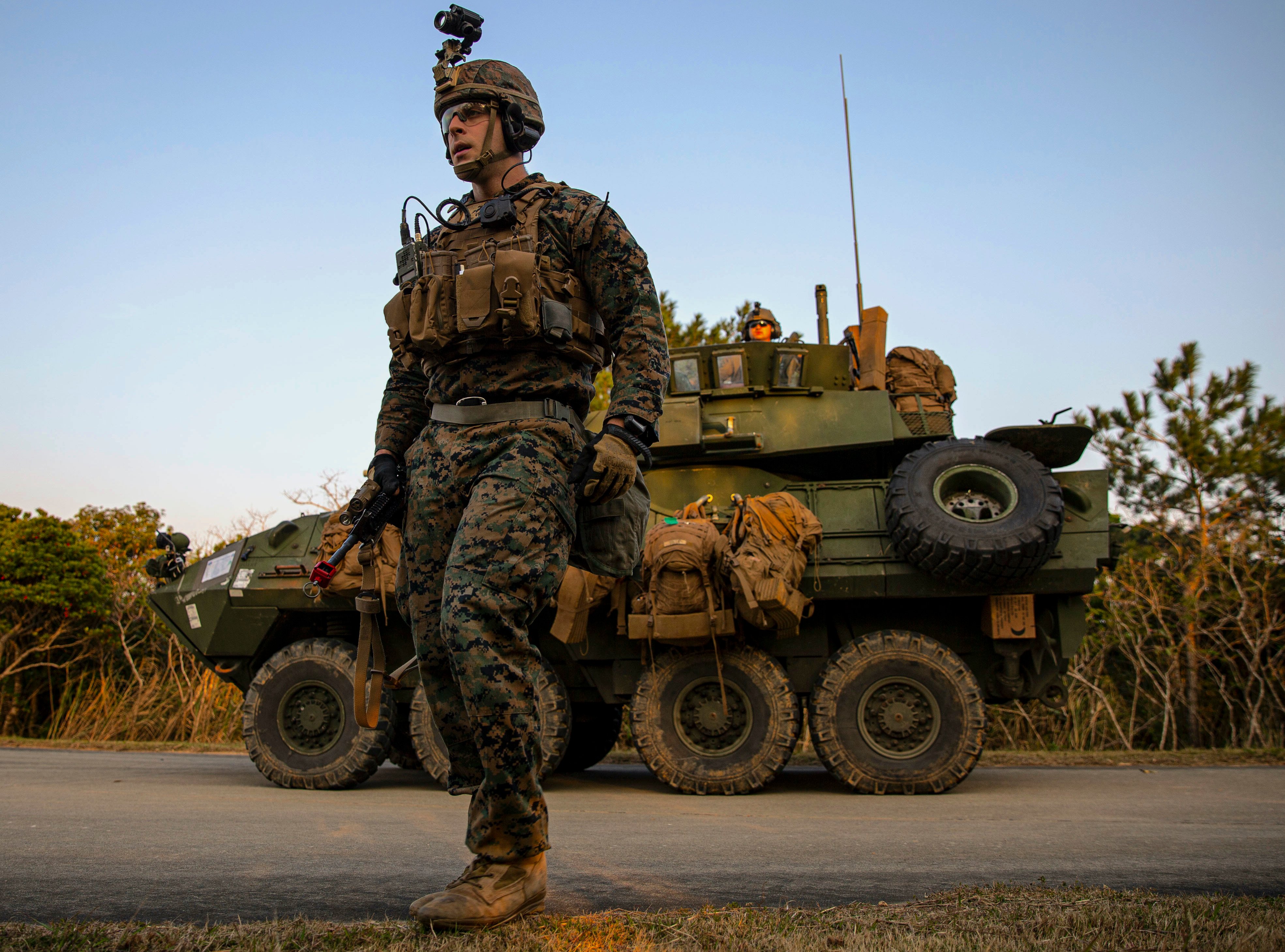
Though recon and counter-recon may be at the top of the Marines’ list, finding a sufficient and affordable replacement vehicle for reconnaissance Marines has eluded the service in recent years.
The Force Design update notes that work over the last year “invalidated the requirement to replace existing LAV-25s with a similar armored, wheeled or tracked manned vehicle in a one-for-one ratio. Continued to examine options for the conversion of legacy Light Armored Reconnaissance capabilities to more broadly capable Mobile Reconnaissance,” it reads.
The work also identifies a “multi-domain Mobile Reconnaissance unit” that would have organic precision fires, “light-weight vehicles, unmanned air and surface systems, boats, and other capabilities necessary to succeed in a contested information environment.”
The service is pursuing an Advanced Reconnaissance Vehicle (ARV) to replace the aging LAVs, but Smith and Director of the Capabilities Development Directorate Brig. Gen. Eric Austin said that the ARV is more of a set of capabilities than a specific platform at this point.
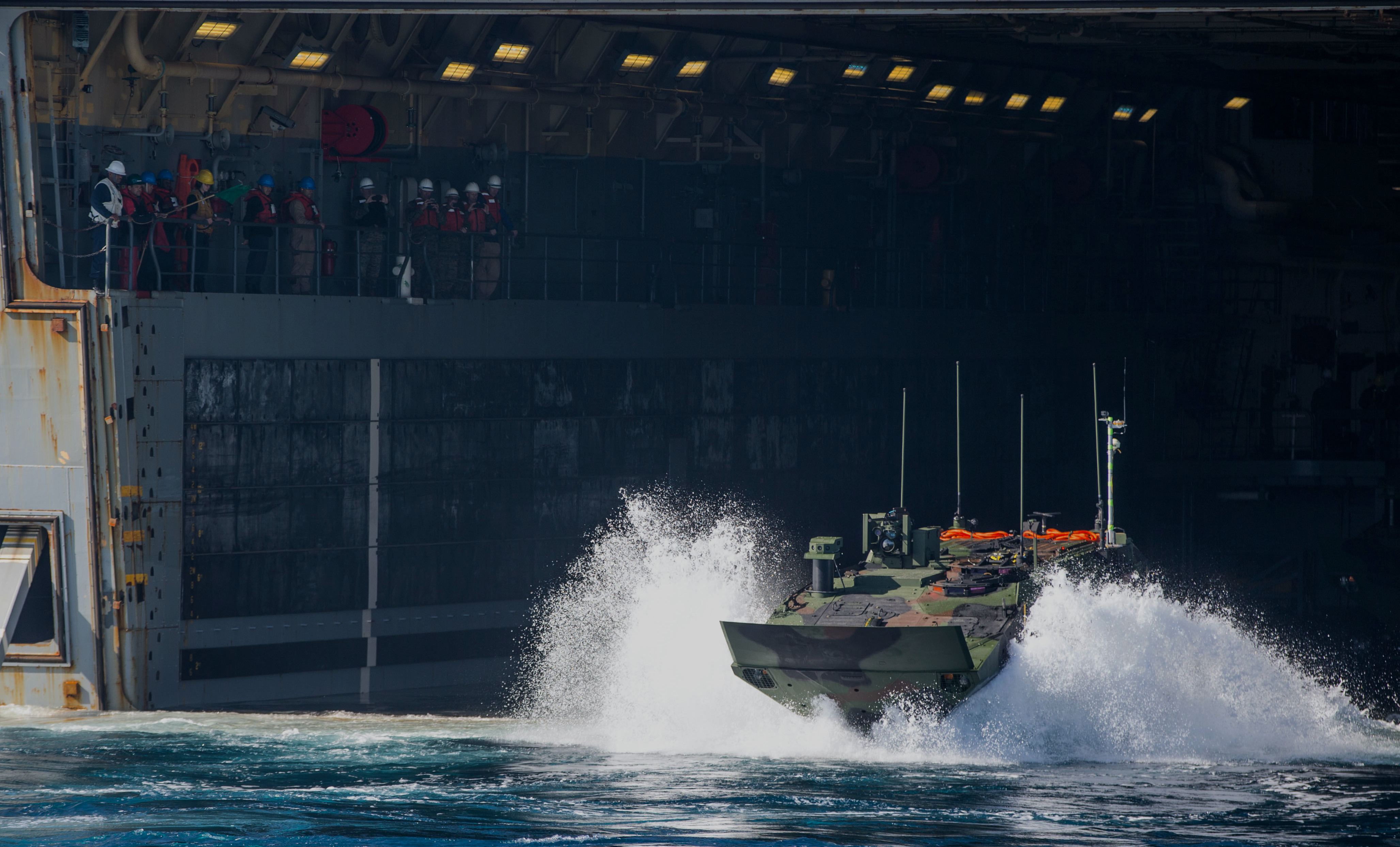
“What [LAV] will be replaced with is the capability to control air and ground robotics and to provide reconnaissance. What form that takes is still unknown, that’s what we’re experimenting and wargaming with,” Smith said.
Austin said his directorate, which falls under Smith, is taking a threat-informed, concept-based look at the requirements for ARV. The directorate has hosted integrated product teams to look specifically at C5ISRT and counter-C5ISRT in all domains, at unmanned capabilities, and mobility. Another upcoming IPT will look at sensing in the air, land and ocean surface, and those will all combine to help inform ARV requirements. A competitive prototyping effort is also ongoing to help work through some of the requirements.
“The ARV is not a LAV: it is a platform, it is an open-architecture, payload-agnostic platform largely that we’re going to have platform-agnostic payloads on that are going to enable us to sense, make sense, [command and control], quarterback, do other things with,” Austin said.
“So the question is, what other platforms can we use to do that same role that would complement it, again, in the complex littorals?”
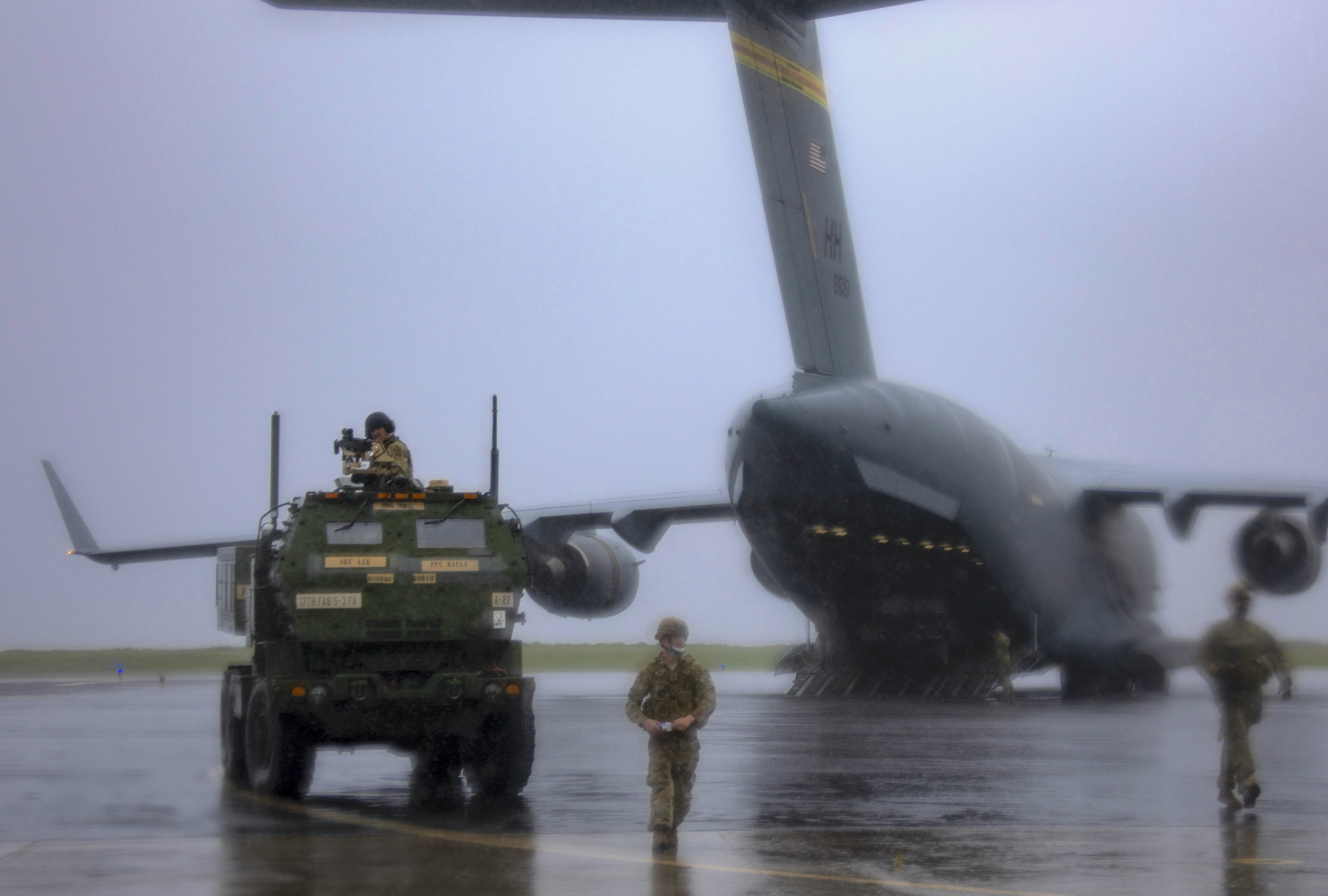
Reconnaissance will shape much of the Marine Corps’ acquisition needs in the coming decade under the Force Design effort, but Smith warned it would be wrong to think the service will need to buy all new systems to excel in a distributed posture across great distances with a great need for reconnaissance and counter-reconnaissance capabilities.
Much the way the service says every Marine is a rifleman, every Marine is now a sensor, and every system they use must be able to sense and pass that data to whoever needs it most, Smith said.
For many of the acquisition priorities under Force Design, “I’m actually not convinced yet that in many cases it’s a, quote, new platform, as opposed to add onto a platform. Make sure they all have an open architecture, meaning can accept the tie-in to artificial intelligence, to the cloud itself. And I think when you add on the capability to an existing platform – because, again, we’re platform-agnostic – as long as everything that’s out there, from the long-range unmanned surface vessel to a ROGUE FIRES battery … as long as they all have the ability to either see data themselves or to pass data from themselves,” then the Marine Corps should be in a good position to collect the information it needs, share it via a secure network, and allow the best unit to take action as required.
Brig. Gen. Benjamin Watson, the commanding general of the Marine Corps Warfighting Lab and the vice chief of naval research, said during the media call that the Marine Corps will be budget-constrained as the service tries to reshape itself with a flat top line, so leveraging existing systems in the joint force or collaborating with partners for developing new capabilities will be important.
He said MCWL works closely with the Office of Naval Research, the Army Futures Command, the Air Force Research Lab, DARPA, the Pentagon’s Strategic Capabilities office and more.
“When we identify capability gaps or requirements to enable to future force, not all of these are going to be service-unique programs and require enormous investments,” Watson said.
“A number of times, we’re identifying opportunities to partner or capabilities that are already resident in the joint force that might be equally suited to support what we’re trying to do.”
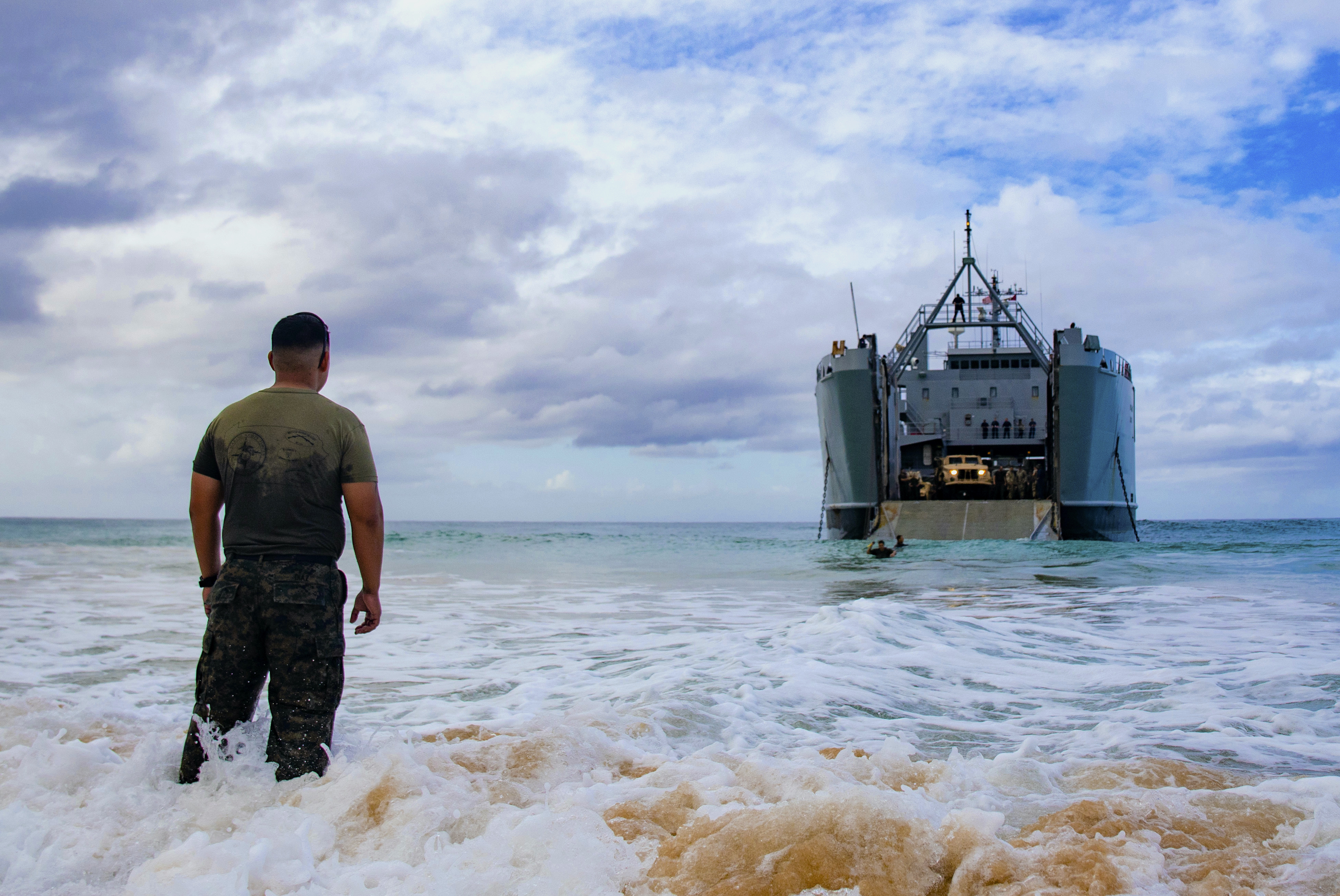
Listed in the Force Design 2030 annual update as ongoing acquisition priorities are:
- Expeditionary long-range precision fires and infantry battalion organic fires (Organic Precision Fires- Infantry and OPF-Mounted)
- Marine Air-Ground Task Force (MAGTF) Unmanned Expeditionary Medium-Altitude Long-Endurance (MALE) aerial systems and sensors
- Long Range Unmanned Surface Vessel with associated swarming drones
- An expeditionary C5ISRT/counter-C5ISRT naval grid that can operate when national connections are lost or degraded
- Semi-autonomous air and surface vessels to provide sensing, targeting, lethality and connectivity in degraded and austere naval environments
- Short-range air defense systems, with an objective of longer ranges
- Network modernizations, to include artificial intelligence and cloud technologies
- Remotely Operated Ground Unit Expeditionary (ROGUE Fires, or an unmanned Joint Light Tactical Vehicle equipped with the Naval Strike Missile)
Personnel and the Infantry Battalion
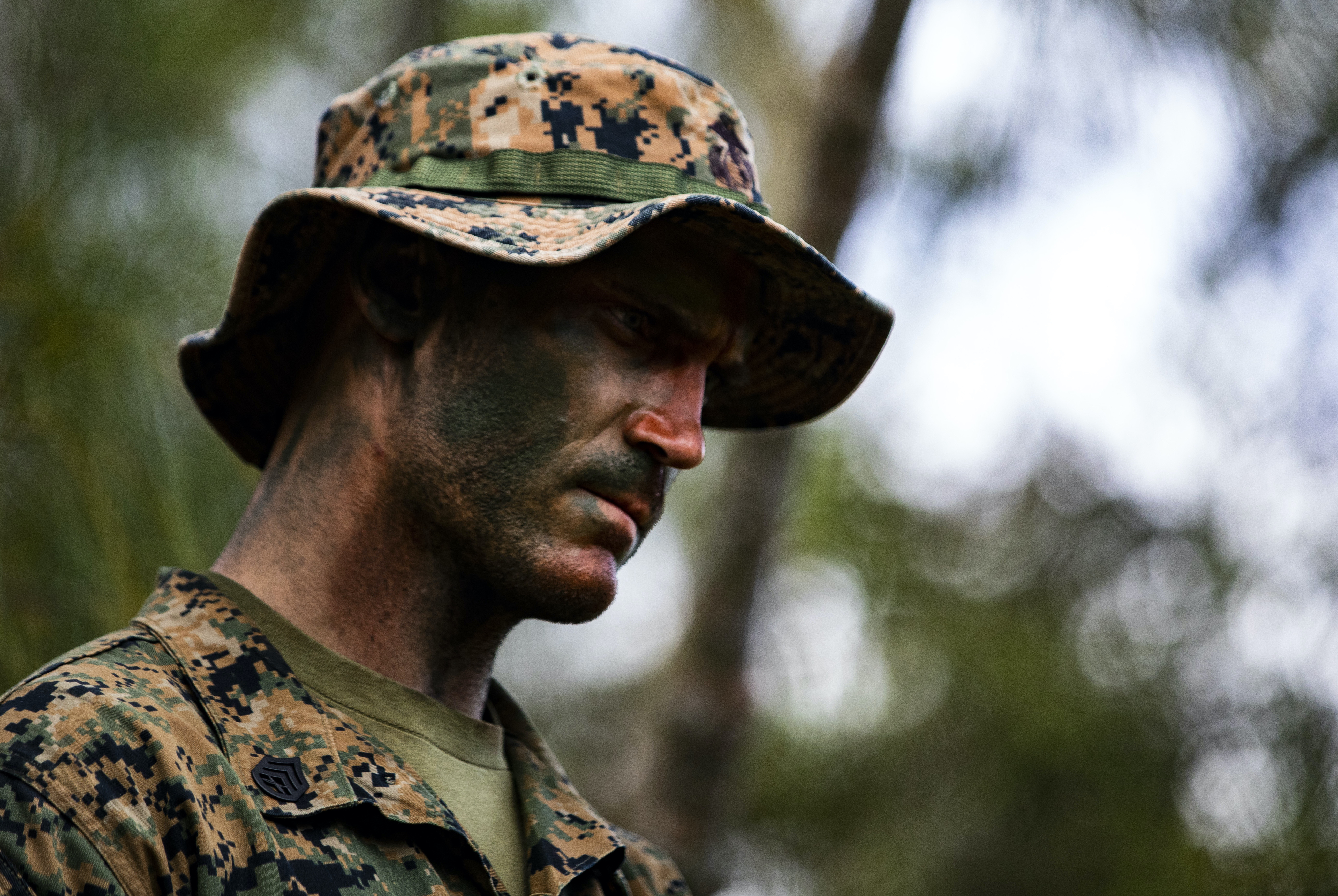
As the Marines take on more complex work, conducted in smaller units operating farther from higher headquarters, training and personnel will have to evolve, too, to keep up with the new operating concepts.
The Marine Corps is the service with the youngest members, many of them on their first contract with the military – less experienced, but eager to do a combat tour in the Middle East, for example – and fewer senior enlisted and higher-ranking officers. This means the Marine Corps is constantly recruiting but not retaining a large percentage of Marines.
Now, that may be flipped on its head to accommodate the Force Design 2030 vision.
“Where the commandant is going here is, if we’re going to be operating in a disaggregated environment, where you have 75 Marines operating throughout the first island chain, at times under duress, in competition and in crisis, and you need that really seasoned, mature decision-making capability, there is an age component to that,” Smith said.
“Now, that age component costs money,” he added, and that’s where discussions are taking place about tradeoffs between the required maturity and experience versus cost.
Training is also part of the discussion, he said. For a given mission, does the service need a gunnery sergeant, or would a specially trained staff sergeant suffice?
Smith said the Marines’ current model of kicking out so many Marines after their first contract expires won’t mesh well with future operations, which will be more complex, require more skills, and require a greater level of self-sufficiency and initiative.

“With the skills that are going to be required to change from – for example, shooting an artillery piece, instead of 40 kilometers with an Excalibur [guided artillery] round, now you’re shooting a Naval Strike Missile out, we just say in excess of 100 miles – you want somebody who’s done that a couple times,” he said.
“So we’re going to have to pay for that, and we’ll have to determine how much” the Marines need and can afford in terms of subsequent term alignment plan (STAP) Marines, or those who have already reenlisted and are on at least their second contract, versus first term alignment plan (FTAP) Marines on their first contract.
Though there won’t be experimentation specifically designed to figure out if the Marine Corps needs a gunnery sergeant or a staff sergeant performing certain tasks, ongoing experimentation regarding the construct of the infantry battalion will help shed some light on manning issues, Watson said during the call.
One hypothesis that helped drive some of the experimentation was that, “in order to handle the complexity, the multitasking, the distributed and disaggregated nature of operations in this future battlefield, that we’ve got to have a more mature demographic. Somebody who’s got more repetitions at basic tasks and functions, has a little more operational maturity in making decisions.”
Infantry battalion experimentation is still early in the process, Watson said, but the plan is to increase the rank structure in some of the small units and compare their performance against traditionally manned units.
Part of the need for more experience is driven by an “arms room” concept, where instead of each Marine specializing in a particular weapon system, and having separate weapons company to bring in further capability, the infantry Marines would be a little more well rounded and able to operate whichever weapon the situation calls for.
“We seek to enhance the infantry battalion’s capabilities by adding organic multi-domain sensing (Operations in the Information Environment, Electronic Warfare, and Unmanned Aircraft Systems) capabilities, organic loitering munitions, and increased mobility. One of the changes being evaluated is a shift to an ‘arms room’ concept with the elimination of Weapons Company and the shift of weapons systems formerly associated with Weapons Company, 81mm mortars and the Javelin for example, into the headquarters or rifle companies. This will allow the rifle company to select mission-specific lethality and employ it organically,” reads the Force Design annual update.
“Adjusting to this concept will require a more highly trained and multi-disciplinary Marine, supported by a longer, more comprehensive entry-level pipeline; this is an effort currently underway within Training and Education Command.”
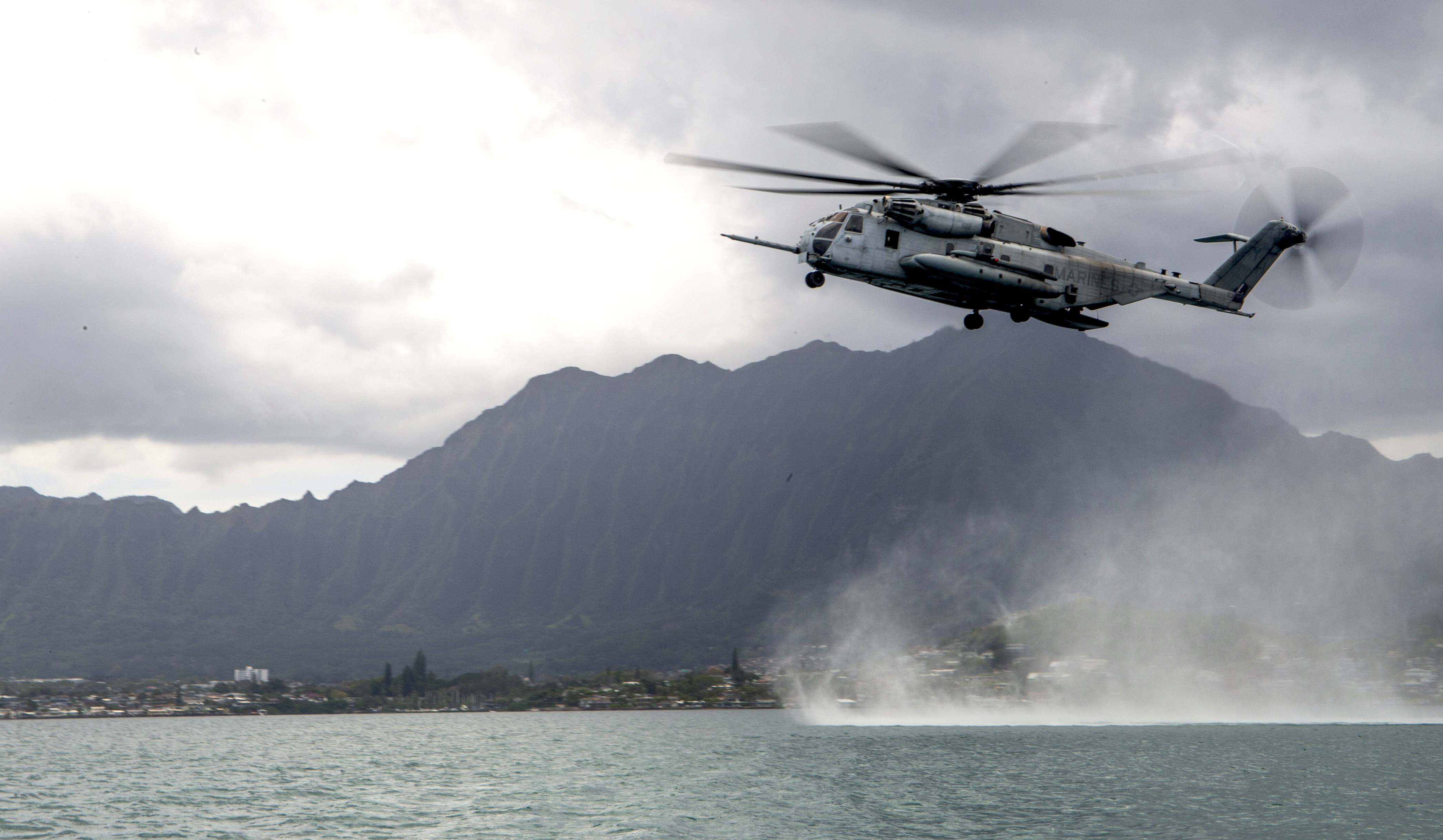
Watson said during the call that the arms room concept calls for “producing a more mature, sort of multi-dimensional utility infielder as an infantryman. So right now, if you’re going to be an infantryman you get basic infantry training and then you specialize in a given weapons system. If you’re going to become a machine gunner, you become an 0331 and you get machine gun training. We have separate Marines who are mortarmen, others who are anti-tank assaultmen, et cetera. What this would do is increase the duration of the entry-level infantry training pipeline, train the infantry Marine in a variety of crew-served weapons systems, such that they are capable of operating more than just one, and then the unit would make a decision based on the mission they’re assigned, based on the threat, et cetera, what weapon systems they wanted to assign to their Marines to execute a given mission. So the arms room means that you would have a sort of an armory of many different systems, and your Marines would be trained in all of them, and then you pick the weapons suited to the mission … as opposed to having single-threat Marines who are only experts at one system.”
Smith acknowledged that there has been pushback on this idea because it breaks with tradition, but he said advances in weapons systems make this a natural move. For previous generations of Marines, shooting at 700 meters was the domain of snipers; when improvements to the barrel and optics of the infantry automatic rifle came along, any individual Marine could successfully hit targets at that range.
Similarly, Smith said, now loitering organic precision fires from a mortar tube can strike targets at ranges much greater than the 60mm or 81mm mortar can, with the added loitering capability; given the great capability of those systems, are they considered weapons or munitions? Nixing the distinction makes sense at this point, he argued.
Progress Investing and Divesting
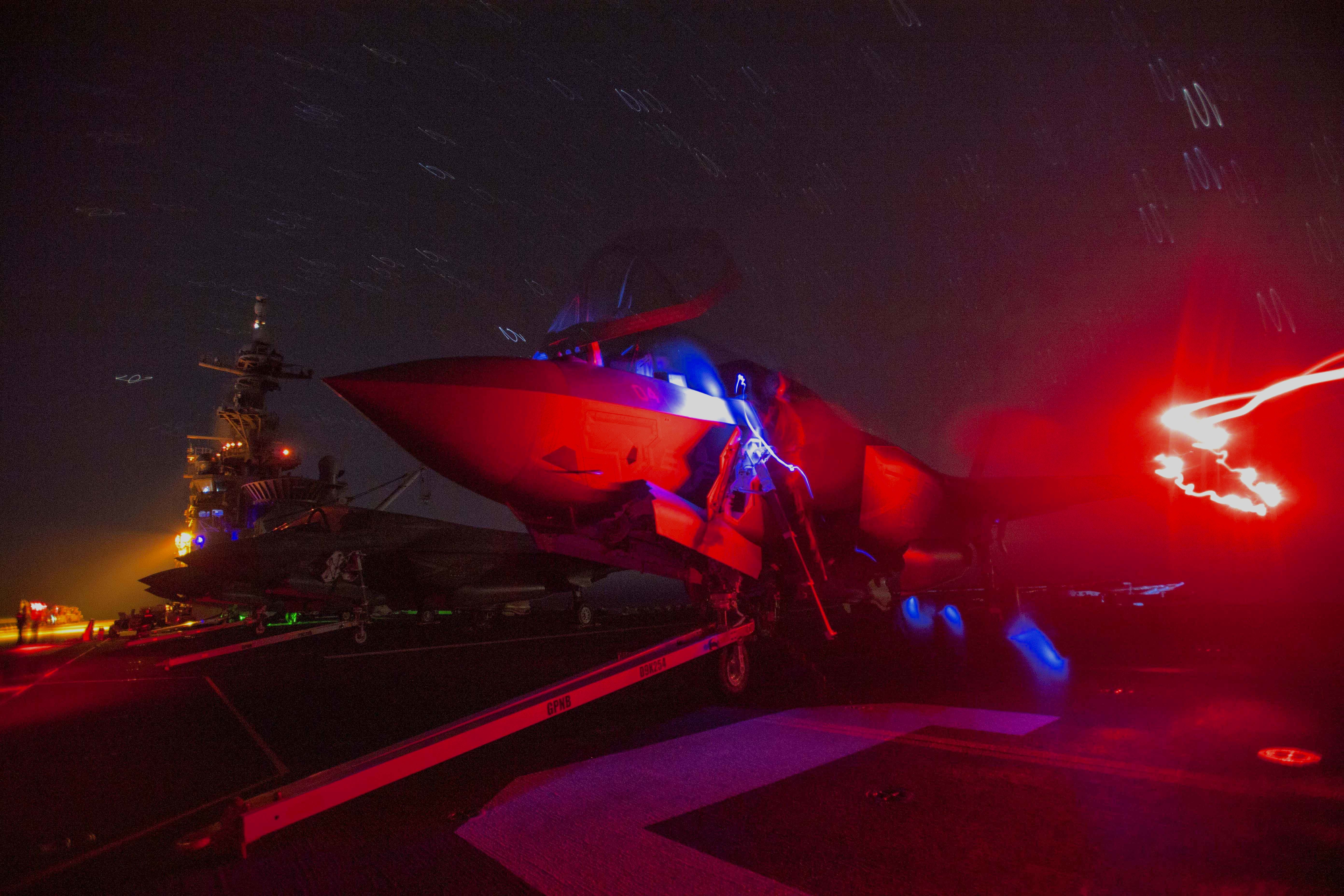
The Marine Corps has already made some firm decisions about the future size and shape of the service, but some details are still being hashed out through the experimentation process.
For example, Smith said the service plans to go down to a force of 175,000 active-duty Marines from the recent 184,100 – but that assumes that each of the infantry battalions has 700 to 750 Marines. If that figure goes up to 760, for example, then the total end strength numbers could pop back up a bit. Smith said there was no appetite to go any below 175,000 for the active-duty force.
Similarly, the Marines have made a decision on the aviation side to settle on 18 VMFA, or strike, squadrons. Currently, the plan is to have 10 planes each, but the service is still determining if that’s the right number of jets per squadron, which would affect acquisition plans for the F-35 B and C programs.
Additionally, the service decided there would be six unmanned aerial vehicle squadrons. The first three squadrons will operate the Medium-Altitude Long-Endurance (MALE) UAV, which today is the MQ-9 – a program of record with a land and sea variant, which Smith said will be the basis of the Marines being able to sense and pass data over great distances in the Indo-Pacific region. As for the next three squadrons, the service still needs to figure out what it wants, Smith added. It could be three more squadrons with the MQ-9 or another MALE platform, or it could be a different UAV aimed at a different mission set, like logistics.
On the smaller UAV side, the service is beginning to divest its RQ-21 Blackjack UAVs and is instead experimenting with new capabilities like the Martin UAV V-Bat.
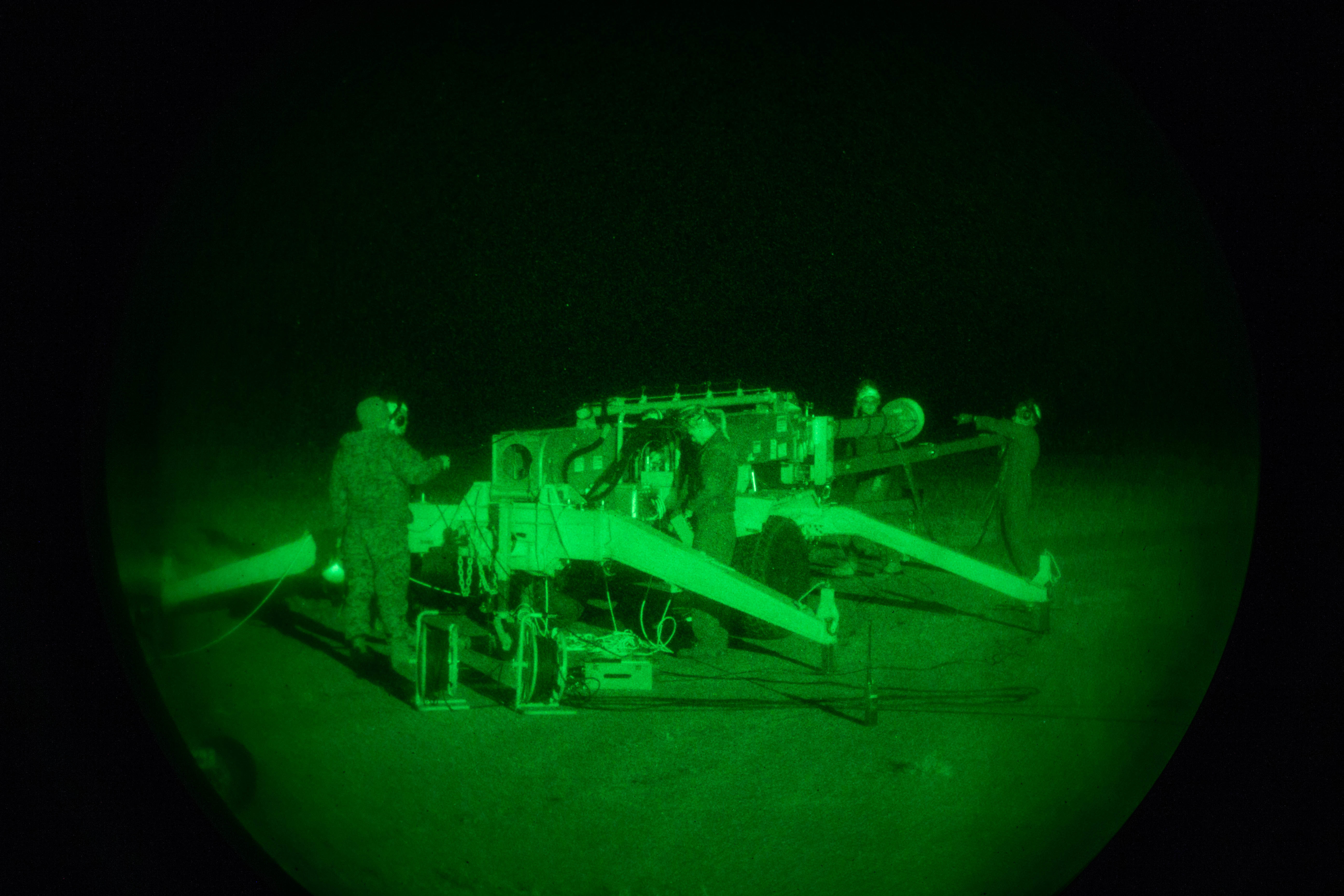
“The commandant has called on us as a goal, as a guidepost, to build an aviation plan that is 40-percent crewed and 60-percent uncrewed, meaning more uncrewed than crewed,” Smith said.
“So that’s a goal, that’s a guidepost. We may or may not achieve that. He’s looking for a roadmap that gets us there, and then we’ll determine what that actual appropriate mix.”
As studies continue on certain aspects, the Marines have already made some irreversible decisions: tanks are gone, and the service is on its way to completely divesting of all active-duty law enforcement capability, with just one battalion remaining on the reserve side. The service is preparing to divest three active and two reserve infantry battalions. It has initiated the divestment of two Marine Medium Tiltrotor Squadron (VMM) V-22 Osprey squadrons and will lose a third squadron no later than the end of 2021. It also initiated the divestment of two Marine Light Attack Helicopter H-1 squadrons and 2.75 Marine Heavy Helicopter CH-53E squadrons.
Conversely, the service has established Marine Corps Forces Space Command as a component command to the U.S. Space Command. The first of three Marine Littoral Regiments is standing up in Hawaii and will be complete by Fiscal Year 2022 and reach initial operational capability by FY 2023. The service validated its need for a Light Amphibious Warship, which is already in industry studies and will head into procurement by late FY 2022. And the Marine Corps released a tentative manual for Expeditionary Advanced Base Operations, which begins to explain to the force how they’ll operate in the future and sets a 2023 goal for refining the EABO vision.





